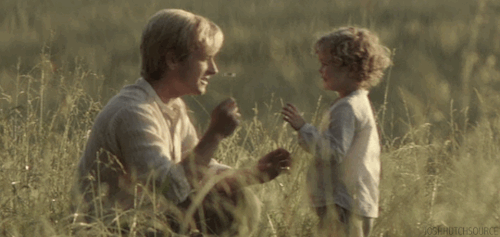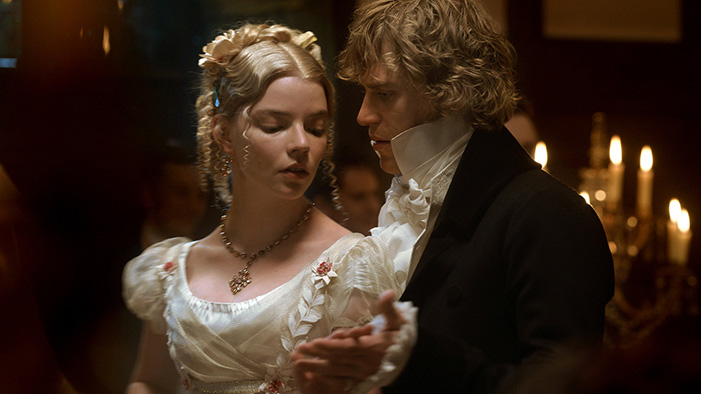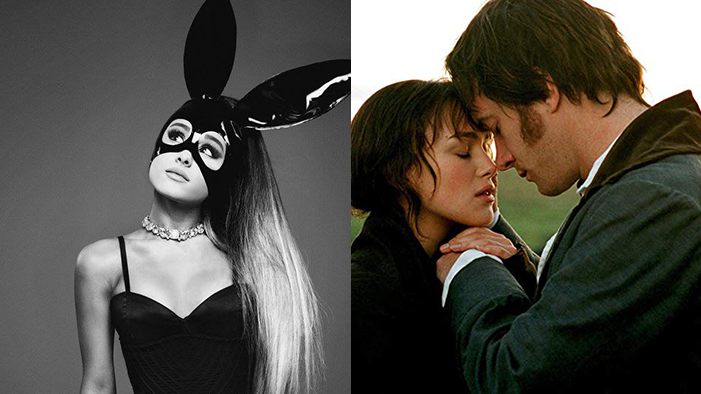Mockingjay Is Not Just Another YA Dystopia; Here’s Why
 Somehow Mockingjay Part 2 came and went quietly; we, the loyal Hunger Games fans, watched it expire beneath our feet last November, dropping a bloom of fire down on top of it that it may live on, frozen in our memories, smiling, holding its triton, topless, eating a sugar cube. (Am I still torn up about Finnick? Damn straight I am.) The Hunger Games was very, very good, but no one particularly cared, having been worn down by the battalions of torn henleys competing for audience attention in The Scorch Trials, the Divergent series, and season 100 of The Walking Dead: Is the Guy With the Baseball Bat Here Yet?
Somehow Mockingjay Part 2 came and went quietly; we, the loyal Hunger Games fans, watched it expire beneath our feet last November, dropping a bloom of fire down on top of it that it may live on, frozen in our memories, smiling, holding its triton, topless, eating a sugar cube. (Am I still torn up about Finnick? Damn straight I am.) The Hunger Games was very, very good, but no one particularly cared, having been worn down by the battalions of torn henleys competing for audience attention in The Scorch Trials, the Divergent series, and season 100 of The Walking Dead: Is the Guy With the Baseball Bat Here Yet?
Such a shame. Because in creating The Hunger Games, Suzanne Collins wasn’t just writing another “blockbuster” “teen trilogy,” she was giving you a map to deal with the obscene inequality and political corruption in your actual world. I have badgered on before about the commentary in THG on race and civil disobedience, and about how Donald Sutherland, who played President Snow, is a raging leftie who wants you to wake up and smell the corrupt roses, but I am here this time to tell you Collins really saved the best for last. The Hunger Games isn’t a teen trilogy, it’s a political trilogy, and it should be as valuable to you as 1984. To find out why, let’s take a close look at MP2.
Killing the Chosen One Myth
The biggest criticism lobbed at Mockingjay (the book and the movies) is that the “hero,” Katniss, spends good parts of the action unconscious. If we were talking about Fast & the Furious 10, they might have a point (I mean, who is driving this Lamboughini???), but this is too simplistic for THG. If Collins was to keep up the pretense that Katniss is somehow a #blessed superhero with preternatural bow skills, and have her deliver all the fatal blows personally with her eyelash extensions in, we would lose the biggest lesson of the series: that this isn’t a fantasy world in which a teen is able to conquer a corrupt system through Tumblr emoting and archery skills; that there is no such thing as a Chosen One anointed by the gods to one day rise up in a second coming of peace and prosperity (there might be in Divergent, but not here).
Because that isn’t how revolution works.
Katniss is tough because she doesn’t have a choice: after her father is killed in a mining accident, she steps up to look after the family. Her mother is a wreck, everyone needs food, so she goes hunting, not unlike the character Jennifer Lawrence played in the grim Ozarks film Winter’s Bone, before winning the role of Katniss. Likewise, she “becomes” the Mockingjay ~accidentally~; she is looking for a way out of the games, and President Snow repurposes her smart aleck trick with the berries as propaganda to sell the Games and hide the radical implications of a tribute beating the gamemaker (RIP Seneca). President Coin uses the Mockingjay later to muster support for the rebels, at which point Snow pivots to outlaw Mockingjay iconography (no more French braids!)—it’s obvious Katniss is just a puppet when we see her in all the makeup, on a sound stage, filming a propo for District 13. The Mockingjay is a weapon she is still learning to wield and reclaim.
Mockingjay Part 2 is the process by which Katniss becomes fully aware of the ways in which she has been used by both sides as chess piece in a much, much larger game. In the below still, you see Katniss, her face washed clean of makeup, clear of responsibilities to shoot propos for Coin (Boggs and Jackson are dead). Finnick is about to die, and she realizes as completely as she has yet that every tribute is a slave to the Games (“Cato killed Thresh. Thresh killed Clove… and round and round it goes”), stuck in the crosshairs of war between Snow and Coin. 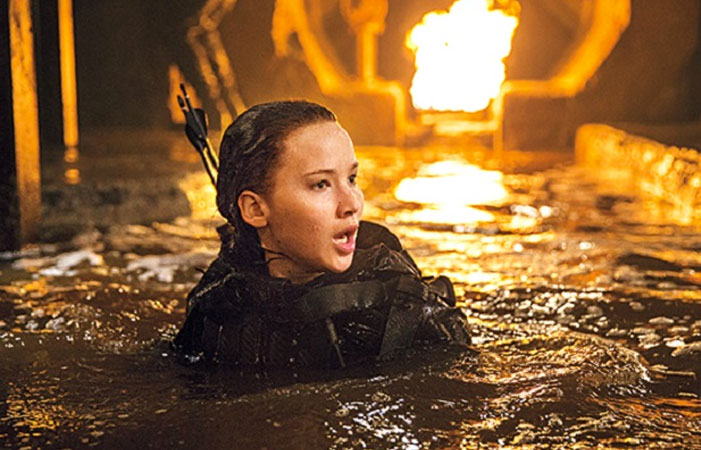
This is why she is absent from parts of the narrative; this isn’t her Games. Coin is pulling the strings while she lies comatose or lobbed under by morphling. The theme of voicelessness or incapacitation is big in The Hunger Games: Pollux’s tongue is physically cut out to take away his political “voice”; Peeta is hijacked; Johanna’s family is wiped off the Earth; countless insurgents are bombed or buried, like Katniss’s father (who I theorize was trying to rebel). The longer Katniss is kept unconscious by Coin, the longer Coin has to assert herself as “interim president.”
When it comes time, Katniss uses the cover of the “Mockingjay” one last time to assassinate President Coin, in the process effectively killing the symbol. Consider:
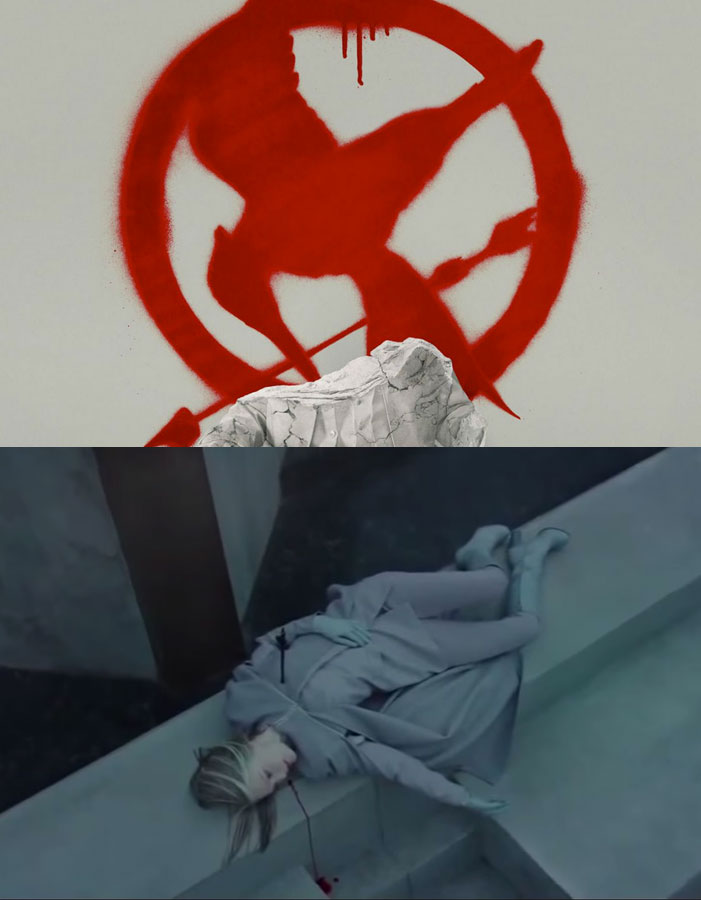
Snow is as good as dead with the red lung, and only he and Katniss (well, and Plutarch) understand fully how Coin has used the rebels and Capitol loyalists to decimate the nation and install herself at the throne. It’s Coin that Katniss has to take out to ensure freedom. At the crucial moment in the 74th Hunger Games, Katniss decides to reject the false choice offered to her by Snow (kill, or be killed) by taking nightlock; she finds herself back at the same juncture two games later—as Coin topples off her perch onto the ground, Katniss is about to tear the vial of nightlock from her Mockingjay costume when Peeta runs up and grabs her hand.
The Architects of the 76th Hunger Games
“Ladies and gentlemen, welcome to the 76th Hunger Games.” That’s the joke Finnick makes when they look at the sheer number of pods hidden in the streets of the Capitol (Finniiiiick!) on the Holo, but it’s true that the final installment is a complicated game of strategy between several parties. First, and most obviously, there is Snow, who in his war room sit-down (below) has fashioned a model arena at the center of his circular table (where he murders a clueless commander). The games are very much ongoing. We need to remember this moment when we find ourselves back at the table later with Coin in Snow’s chair.
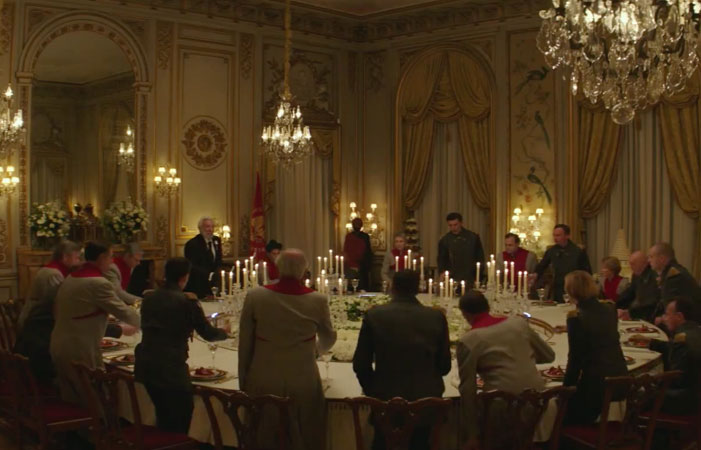
Second, there is President Coin, who makes the call to starve the citizens of District 2 out of the Nut by bombing it until avalanches seal all the exits but one (the one leading to Katniss, who she presumably hopes will accidentally be martyred by gunfire—consider how the shot to Katniss’s chest armor mirrors the spot where Katniss’s arrow hits Coin later on). Everyone blames Gale for his sadistic military traps and for the death of Prim, but I consider Gale only marginally more complicit than Katniss—both are attempting to plot a long-game in which they minimize casualties by ending the war as fast as they can. It is Coin’s masterstroke to use the Capitol children and rebel medic units as a trap to blow the last of Snow’s loyalty base away.
Third, there is Plutarch Heavensbee (Phillip Seymour Hoffman, man, ayeee), who double-crossed Snow as gamemaker to get Katniss out of the arena to District 13 and has second-sat Coin through her machinations. But was he on her side? Every single scene with Hoffman was a perfectly ~perfectly~ ambiguous display of masked cajoling to let Katniss do what she wanted, and, in retrospect, shows a masterful long game. In his letter to Katniss, he assures her that he did not desire a leadership role, and tells her that Paylor has been chosen by the twelve heads of district in a completely democratic (as opposed to plutocratic) election. The ultimate secret operative, he has let Katniss think the worst of him, that he can continue operating covertly to give her a chance at freedom, as we see when we get the shot of him watching on in the moments after Coin has been felled.
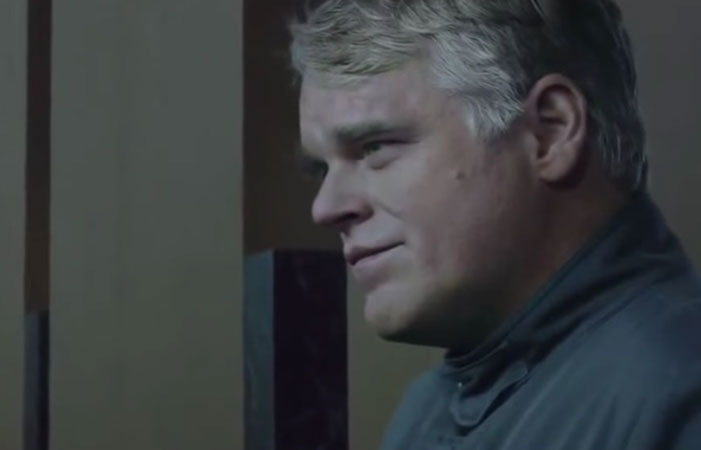
Once a gamemaker, always a gamemaker.
Using the Capitol Citizens as Scapegoats
The worst thing you could do is read The Hunger Games as a story of good (The districts! Rebels!) versus evil (the Capitol!). Collins goes to great pains to teach us that the people of the Capitol are ignorant (hence panem et circenses), and victims themselves. The class warfare between the poor districts and the wealthy Capitol is yet another distraction that keeps citizens of Panem from realizing they are being played (does the concept of building a wall to keep the riff raff out sound familiar?). In the first film, we are given Cinna, enduring fairy godparent and glam gay best friend to Katniss, as the first sign that #notallCapitolcitizens are complicit in the regime. After Katniss melts the arena in Catching Fire, we learn that a great many Capitolites are rebels, and that still more have been punished and disappeared, living in the locus of the regime. This is when we see Effie sans makeup, at her most vulnerable, pink and eyebrowless, without a kohl pencil, etc.
In the finale, rebel sympathizer Tigress provides crucial cover for Boggs’ unit (we don’t get the outrage of Katniss finding Flavia, Octavia, and Venia locked up by Coin, and this is a sympathetic substitute), and gives Katniss and Gale Capitol jackets to infiltrate Snow’s mansion.
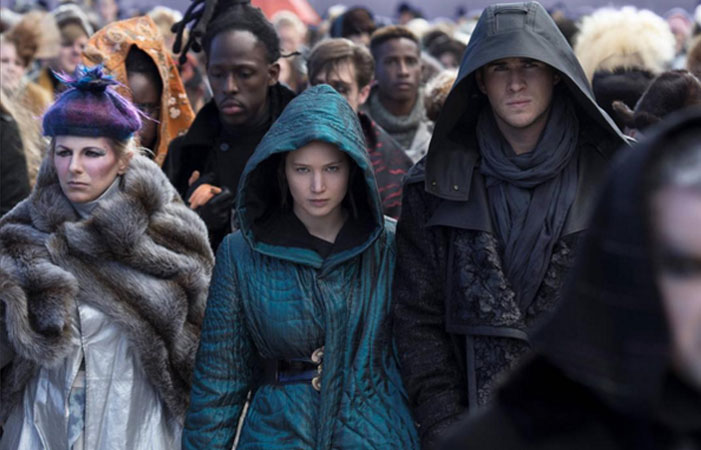
Looking at this shot, you see the silly hairstyles and bright patterns that set Capitol couture apart from the utilitarian outfits from the districts, but you also see solemn faces, people young and old, people of color. These people were born on one side of the wall, Katniss was born on the other, but it means nothing. It’s easy to judge people for their dumb fashion and gigantic hoods (I judge guys in tight jeans, I admit it), but their clothing says so little about who they are. In this shot, you see lives that aren’t worthless, is the baseline takeaway.
Won’t Somebody Think of the Children
Francis Lawrence really runs that idea home—that the citizens of the Capitol are innocent, too—when he films the lead-up to the explosions that happen as citizens frantically pass their children to the front of the crowd so they can find protection inside Snow’s mansion. On the way to the mansion, a girl in a yellow coat (below) recognizes Katniss, who is doing her best not to be identified by the Peacekeepers. Seconds later, the girl is screaming over her mother’s dead body. It’s a super horrific moment that will bring to mind the girl in the red coat in Schindler’s List, for those of you who have decided to spend a Saturday night wallowing in the Holocaust instead of “socializing.”
The color yellow is used throughout the series to show maternal Katniss. Below right, you can see her wearing it when she and Peeta appear on stage to announce their fake engagement and fake pregnancy (look at the GLOW on Katniss’s cheek!) and then you of course recognize it from the final scene, where Katniss sits in a meadow wearing yellow, also Primrose’s color (she was more a mother to Prim than Mrs. Everdeen), holding her new bebe daughter.

There is a lot there: we are getting a slow recovery from the horrors of war, the loss of mothers and children and Prim and Finnick.
Ah yes, Finnick. His wise, wide smile during their Capitol hijinks (“guess we will have to honeymoon in the Capitol”) are a good tell that he knows he won’t make it. Finnick and Annie’s wedding is the sole bright spot in the film, other than the bittersweet final scene, and gives us a super sly hint that Annie is knocked up, which gives us the tiniest bit of solace later on. Will you *look* at this fertility dance right here?
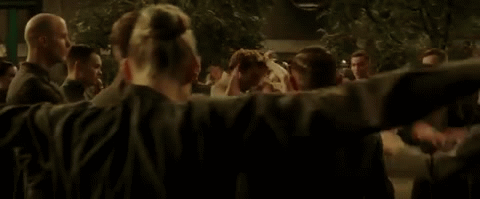
We find out in a post-script from Annie to Peetniss that she has had a son, a mini Finnick, after the fall of Snow’s empire. I mean we are all totally heartbroken at that point, but I’ll take it (think of the mini trident!).
The Artful Life

Here is Effie back in her Capitol couture after the fall, bidding Katniss and Haymitch goodbye, although, note the sweet matchy-matchy action between Effie and Haymitch’s fuzzy grey alpaca collars—it won’t be goodbye for long. She tells Haymitch:
I am to wait- I do not doubt I am to meet you again,
I am to see to it that I do not lose you.
(… I’m paraphrasing) which, of course they aren’t going to be strangers. Hayffie kiss each other on the lips and then Haymitch and Katniss crunch their way out of the palace. Left alone at the foot of the steps, we get the best piece of emotion we have seen in this entire film as Effie watches them go…
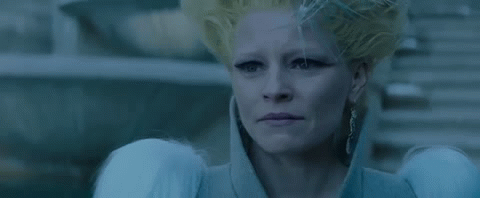
I think it is important that the character who does the weeping on behalf of everyone else is a citizen of the Capitol. Effie starts out as a vapid cross between a fairy godmother and What Not To Wear’s Stacy London, and over the course of the series becomes the buoyant heart of the operation: stick her in a bunker and she will wear her prison pants as a doo-rag; turn her younger friend Katniss into a piece of artillery, and she will find beauty in the display of feminine strength; show her an aging, rugged, alcoholic bachelor and she will see the sweetness beneath that unforgivable beanie Haymitch insists on wearing.
Effie, in the end, is there to show you the importance of free expression, the importance of stories like The Hunger Games. Art is always subversive: Cinna turns Katniss’s wedding dress into an act of treason, Katniss’s singing of The Hanging Tree becomes the hymn for the death march to blow up the Capitol’s hydroelectric power source, control of the air waves in Panem is at least as important as the nukes each side has in their bunkers. The question that crops up as we start sorting the districts into lumber, hydro, aquaculture, minerals, etc,, is: What good is the Capitol? What is it’s purpose, other than looking like a silly futuristic Versailles? And the answer is: to be the center of the arts and government.
Epilogue
The ending of MP2 is a bit drawn out, if I’m honest, but the book can afford to give us a twenty year pause, whereas the film has to roll on. When we finally land in the meadows of District 12, it’s to take in a portrait of Katniss and Peeta’s family a few years down the road, with two adorbs children. Here, Peeta is asking their son to make a wish…
It’s a hopeful ending, punctuated by the same birdsong we heard in the opening moments of The Hunger Games, when Katniss and Gale met outside the District to hunt.
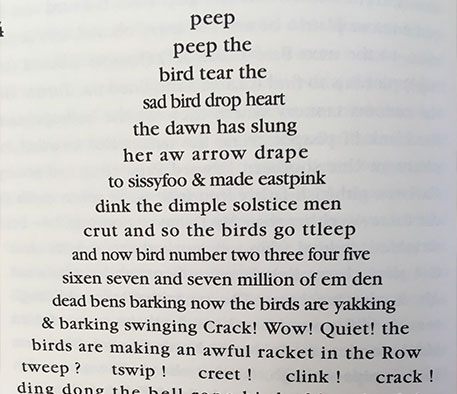
And the idea of nature is big—themes of regrowth, the spring, peace, balance. Snow’s pruned roses in his greenhouse, and the arenas themselves, were artificial. Collins’ utopia is a world where families have enough to eat, and freedom to live their lives: it’s Bonnaroo, basically.
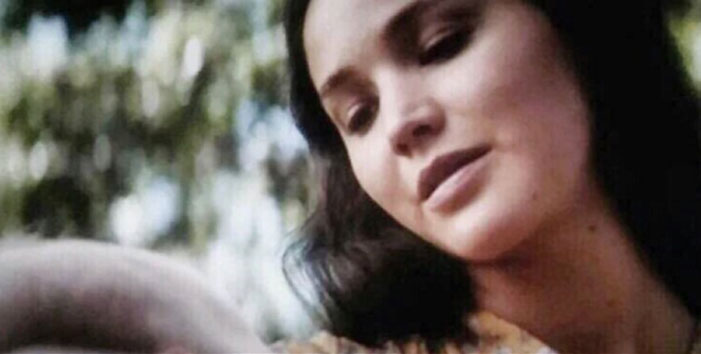
One of the last shots is of Katniss looking down at her baby (which thank god is not a doll), the camera giving us roughly the point of view of the child. (Compare it to the level camera in my personal nightmare, the epilogue to The Deathly Hallows.) Katniss is no longer a kid, here, and this is not just a teen dystopian caper: it’s a challenge to the generations that come after, asking them to ensure they fight for the important things.
Are you as guilty as I am of obsessing over the little Easter eggs in The Hunger Games? **Bonus points if you can identify the insurgent poetry stuffed into this article.**








